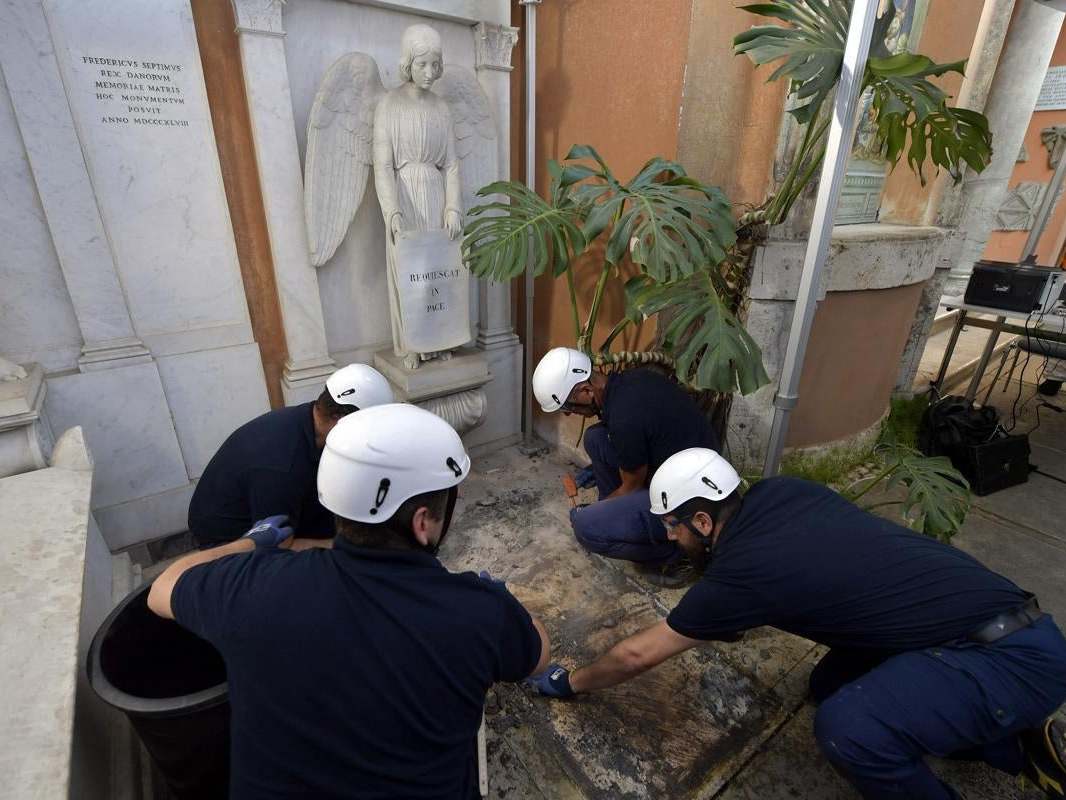Emanuela Orlandi: Vatican digs up 19th century graves amid mystery over girl who vanished in 1983
Empty tombs raise new questions over what happened to remains of German princesses

Your support helps us to tell the story
From reproductive rights to climate change to Big Tech, The Independent is on the ground when the story is developing. Whether it's investigating the financials of Elon Musk's pro-Trump PAC or producing our latest documentary, 'The A Word', which shines a light on the American women fighting for reproductive rights, we know how important it is to parse out the facts from the messaging.
At such a critical moment in US history, we need reporters on the ground. Your donation allows us to keep sending journalists to speak to both sides of the story.
The Independent is trusted by Americans across the entire political spectrum. And unlike many other quality news outlets, we choose not to lock Americans out of our reporting and analysis with paywalls. We believe quality journalism should be available to everyone, paid for by those who can afford it.
Your support makes all the difference.The tombs of two 19th-century German princesses were pried open at a tiny Holy See cemetery on Thursday and turned out to be completely empty, creating yet more questions in a decades-long search for a missing girl.
The empty tombs dashed any expectations that they held the remains of a teenager who vanished in 1983 after leaving her family's Vatican City apartment.
Emanuela Orlandi's disappearance is one of Italy's most enduring mysteries and the opening of the tombs at her family's request was the latest search for possible leads to fail.
Instead, the gravesite inspections raised only new questions: what happened to the remains of the two princesses who were buried in the side-by-side tombs in 1836 and 1840, respectively, in peaceful Teutonic Holy Field near St Peter's Basilica?
"The tombs are empty. We are all amazed," Orlandi family lawyer Laura Sgro told reporters.
It was Ms Sgro who had received an anonymous letter suggesting the family check out the tomb in the cemetery where a stone angel holds a scroll reading in Latin "Rest in peace."
Witnessing the tomb's opening, along with Ms Sgro and a technical expert for the Orlandi family, was also Pietro Orlandi, whose 15-year-old sister disappeared after she went to her music lesson in Rome on 22 June 1983.
The siblings' father worked as a messenger for the Vatican and the family lived in Vatican City State.
The Vatican said in a statement that the opening of the tombs "yielded a negative outcome. No human remains nor funereal urns were found."
It said the inspection of Princess Sophie von Hohenlohe's tomb turned up an underground chamber measuring roughly 4 by 3.7 metres (13 by 12 feet) that was "completely empty." Then the stone lid of an adjacent sarcophagus of Princess Charlotte Federica di Mecklenburg was removed and inside "no human remains were found," the Vatican said.
It added that relatives of the two princesses were informed that the tombs of their loved ones were empty.
A Holy See spokesperson, Alessandro Gisotti, said the Vatican is combing through documentation about two structural projects that involved the cemetery area, one in the late 1800s, and the other between the 1960s and 1970s, in case that work might explain why the princesses' remains were not there.
The Vatican had announced it had engaged a forensic anthropology expert, who is a professor of forensic medicine at a Rome university, to examine the remains and prepare them for DNA testing. But that arrangement proved premature when no remains were found.
Pietro Orlandi said the fact no bones were found was "personally a relief" in a sense, since it would have been upsetting to view remains that might have been those of his sister.
Speculation has swirled around Ms Orlandi's fate for years. Conspiracy theories have abounded, including perhaps she was kidnapped as a part of a failed bid for the release of the Turkish gunman who shot and severely wounded Pope John Paul II in St Peter's Square in 1981.
Last year, two set of remains were found during renovations in the basement of a building on the grounds of the Vatican's embassy in Rome. Scientific testing ruled out that the remains were Ms Orlandi's.
Associated Press
Join our commenting forum
Join thought-provoking conversations, follow other Independent readers and see their replies
Comments